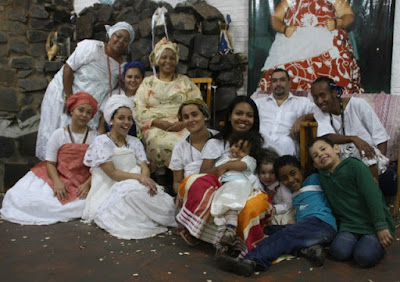The Natural Curitiba (Out of the beaten track)
I am not talking about the man-made parks like Tingüi, Tanguá, Barigüi, Passaúna or any other in the likelihood of them that have been created to solve some shameful nature-related-man-made disaster in the form of what I call “potamicide” ( assassination or murder of rivers) thanks to uncontrolled, unplanned or unchekered development (which I call “swelling”). Most rivers lending their names to Curitiba’s parks will be dead or nearly dead right after the first bend downstream from the lake or will be highly polluted or offensively stinking before they leave the city limits – and most of them are what you can call tributaries of the Iguassu River.
Although a plateau city, Curitiba lies very close to the foothills of the Atlantic Subtropical Forest on the Atlantic Mountain Range called “Serra do Mar”. Less than 20 kilometers separate the Praça Santos Andrade by the UFPR’s (Federal University) Law School building, from the foothills in the cities of Piraquara, Quatro Barras and Campina Grande do Sul. What I am going to say now is not very good to the economy of the Curitiba bus system. I took a Curitiba – Piraquara bus from the Praça Santos Andrade all the way to the piraquara Bus Terminal, got off the bus, boarded another bus to Roça Nova – the highest point on the Curitiba – Paranaguá highly reccomended railway, then back to the Piraquara Terminal and then on to Santos Andrade Square. Then I got off to get my legs properly stretched out. For all that I paid just R$ 1.90. All I had to do was not to get off the bus except in integrated transport terminals and never leave the terminals. The difficult part for this kind of bus riding adventure is the timetable for the Piraquara – Roça Nova bus. There are buses only at 7.00 AM, 1:15 PM going to Roça Nova. Dificult but I did it! There a lots of communities served by just two, three, four buses a day. Tough!
So most of Curitiba natural appeal lies to the East, toward the mountains but still within the Curitiba Metropolitan Area. And the best thing to do in order to see the best there is in a clean, comfortable, neat way is to take the daily Serra Verde Express train to Morretes (extending all the way to Paranaguá, on Sundays).
Otherwise you can join the local adventurers and head to the Marumbi Peak (State’s highest point) by train or the Anhagava Peak through Quatro Barras, Still in the Quatro Barras area it is possible to take a walk along the Itapava Trail – the oldest in the state from pre-colonial times. The Caraguatá Group in the Quatro Barras organizes rides and walks in the area – but I don’t know how they work. I am about to meet group members and find out who does what, when, how and for how much.
Although a plateau city, Curitiba lies very close to the foothills of the Atlantic Subtropical Forest on the Atlantic Mountain Range called “Serra do Mar”. Less than 20 kilometers separate the Praça Santos Andrade by the UFPR’s (Federal University) Law School building, from the foothills in the cities of Piraquara, Quatro Barras and Campina Grande do Sul. What I am going to say now is not very good to the economy of the Curitiba bus system. I took a Curitiba – Piraquara bus from the Praça Santos Andrade all the way to the piraquara Bus Terminal, got off the bus, boarded another bus to Roça Nova – the highest point on the Curitiba – Paranaguá highly reccomended railway, then back to the Piraquara Terminal and then on to Santos Andrade Square. Then I got off to get my legs properly stretched out. For all that I paid just R$ 1.90. All I had to do was not to get off the bus except in integrated transport terminals and never leave the terminals. The difficult part for this kind of bus riding adventure is the timetable for the Piraquara – Roça Nova bus. There are buses only at 7.00 AM, 1:15 PM going to Roça Nova. Dificult but I did it! There a lots of communities served by just two, three, four buses a day. Tough!
So most of Curitiba natural appeal lies to the East, toward the mountains but still within the Curitiba Metropolitan Area. And the best thing to do in order to see the best there is in a clean, comfortable, neat way is to take the daily Serra Verde Express train to Morretes (extending all the way to Paranaguá, on Sundays).
Otherwise you can join the local adventurers and head to the Marumbi Peak (State’s highest point) by train or the Anhagava Peak through Quatro Barras, Still in the Quatro Barras area it is possible to take a walk along the Itapava Trail – the oldest in the state from pre-colonial times. The Caraguatá Group in the Quatro Barras organizes rides and walks in the area – but I don’t know how they work. I am about to meet group members and find out who does what, when, how and for how much.



Comments